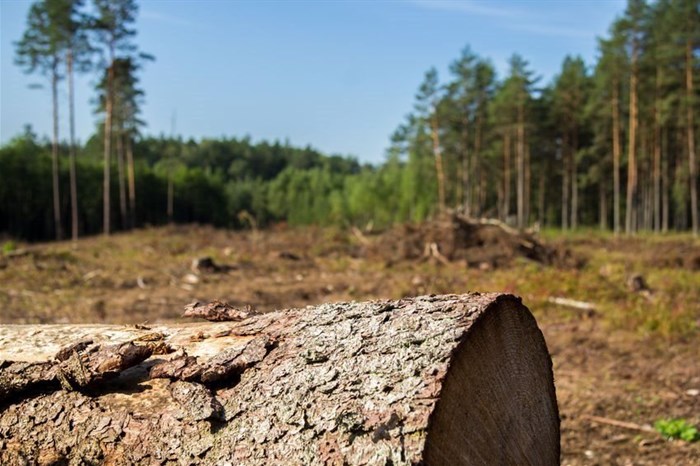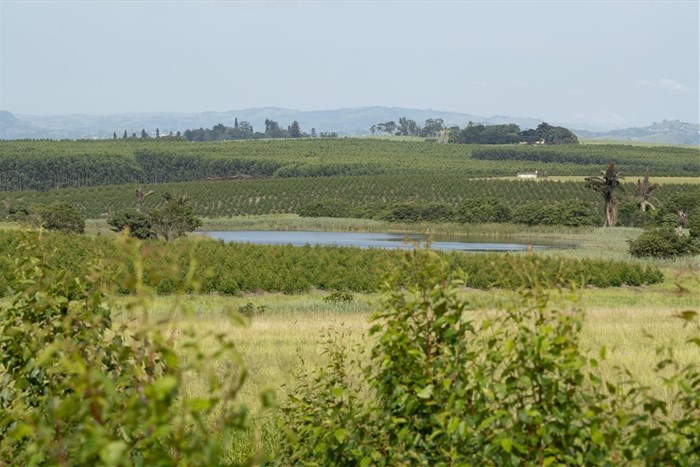
In the quest for a higher state of environmental consciousness, there is an increase in misinformation around paper and its impact on our planet. The misinformation seems to ignore how sustainably grown trees act as carbon sinks (thanks to photosynthesis), or that farmed wood is a renewable resource. Instead, the myths about the forestry and paper sector have grown ignorant tendrils across the internet, into literature, school curricula and textbooks, and have taken root deep within our minds.
We have been taught to protect trees. We have been made to believe that the production of timber and paper causes deforestation, and that using digital forms of communication, advertising and reading will save our planet.
Climate scientists have recently indicated that this year could become the hottest year on record as the warming El Niño effect continues. While there are a number of human-influenced impacts at play, we rarely consider the impact of our digital footprint on the planet.
TechTarget cites statistics from the International Energy Association that the world’s data transmission networks and centres are responsible for nearly 1% of energy-related global greenhouse gas emissions annually and accounted for approximately 300 metric tons of carbon dioxide equivalent in 2020.
A study by the Massachusetts Institute of Technology (MIT) also found that cloud computing and data services now have a greater carbon footprint than the entire airline industry and a single data centre can consume the equivalent electricity of 50,000 homes.

It’s something we rarely think about as we click send a hundred times a day or save something to ‘the cloud’. We have been led to understand that everything digital is better for the environment by greenwashed statements.
I am not saying "unplug the Internet and print everything". I am saying that we need to get our facts straight. There are always two sides to an issue like this. The digital world is very much part of how we live and thrive, but we are doing our economy and society a disservice by seeing the forest and paper industry as an environmental villain.
‘Greenwashing’ is when an organisation or sector spends more time and money on marketing itself as being environmentally conscious than it does on minimising its environmental impact. Unfortunately, paper has been an easy target of this kind of misdirection.
A number of banks in South Africa are guilty of greenwashing and we have taken them to task. One particular green bank has pushed its paperless transition by urging consumers to join a ‘movement towards a cleaner, greener, paperless world’. Another bank had a message on its blue ATM screens: “If everyone said no to a receipt just for one month, we would save 45 trees.”
It’s necessary to unpack why businesses and consumers think paper is bad before we can change perceptions.
The production of timber, pulp and paper does not cause deforestation. In South Africa, like wheat or maize, trees are farmed – except with longer rotations. There are always trees of different stages of maturity growing, and forestry companies use the same land over and over again, with thousands of hectares audited, certified and sustainably managed. Deforestation is the removal of trees without replanting, and a change in land use, such as cattle farming, urban development or human settlements.
That said, deforestation is a very real concern in developing countries and some African countries, where illegal logging of tropical forests is happening at an alarming rate. It’s why forest certification is so important, and where consumers can wield their power by only purchasing paper packaging, books or other wood-based goods with either a FSC or PEFC label. These certification symbols indicate that the wood or paper is sourced from sustainable sources.
If you see an image of a forest plantation that has been felled, you might assume that those trees are lost forever. I am willing to bet that the same area will be showing 50 shades of green within 12 months as the trees begin to coppice (regrow) or are replaced with saplings.
On the flip side, we do not see the impact of storing terabytes of data in the cloud, posting our holiday snaps on Instagram or sending emails to all and sundry. We do not see the tonnes of metals, cables, fans, switches, the electricity needed to power the servers all or keep them cool. We do perhaps see the mounting volumes of e-waste.
In all things, we need to consider the sources and flow of materials that we use.
Yes, at compartment level, forestry plantations are a monoculture, not unlike fields of sugar cane or other forms of agriculture. Zoom out to a landscape level and you will find that our members’ forest management practices support biodiversity conservation with incredible success and often in collaboration with environmental organisations.

A third of forestry-owned land is not planted with commercial trees but managed for the conservation of the natural habitats and the biodiversity they contain. This in turn balances the ecosystem and ensures healthy, productive plantations.
All life on earth requires water. Much like us, plantations will take up the water they need and transpire the excess. If a eucalyptus or pine tree is planted near a watercourse, it will take up more water. The amount of water they need and use depends on an array of factors from abiotic (soil, climate) to biotic such as the size, age and health of the plant.
This is why water stewardship is exercised, ensuring that trees are never planted beyond the buffer zones between plantations and riverine areas. There are ongoing programmes to ensure that such species, along with other alien invasive species, are removed from environmentally sensitive areas.
Our country’s 1.2 million plantations are not irrigated, and the average annual water requirement (water used) for forestry plantations has been calculated to be 428 million cubic metres per year, approximately 3% of South Africa’s total water usage. By comparison, crop irrigation is 7,920 million cubic metres (62%) with urban domestic use just less than three million cubic metres (23%).
While digital media has undoubtedly increased our access to information, delivered convenience and opened up new economies, the idea that it will render print and paper obsolete is, well, ridiculous.
Tim Harford writes in ‘Fifty Things that Made the Modern Economy’: “Old technologies have a habit of enduring. We still use pencils and candles. The world still produces more bicycles than cars.”
Many people forget that paper is more than the stuff we stick into our laser jets and copiers. The same stuff that makes pristine A4 sheets makes cardboard boxes, gift bags, toilet paper, facial tissue, magazine paper, book paper, labels, and countless cellulose-based products such as sponges, textiles and cellulose acetate (or cellophane). They all started as wood fibre. These everyday products are all renewable, many of them recyclable.
Other components of wood are finding their place in a variety of applications: sugars can be used to make xylitol; lignin is processed into lignosulphonate for dust suppression, water treatment and improving the flow of concrete.
If you want to use wood and paper products in an environmentally sound way:
• Put down the greenwashing paintbrush, because digital media does not grow on trees.
• Change or remove that email signature footer. Please.
• Make sure the paper you use is sustainably sourced by looking for certification symbols such as FSC or PEFC.
• If you print, recycle the paper along with paper-based packaging and other recyclable paper products.
• By understanding the facts, dispelling misconceptions, and embracing emerging trends, farmed trees, print and paper do not need to compete with digital or vice versa. The two worlds can complement one another and fulfil functions that the other cannot.
Forest, pulp, and paper companies are among the most fervent adherents of sustainability. Not only is our sector committed to being environmentally conscious and resource efficient, but we also invest incredible amounts of time and resources to make sure we make the most of our trees, supporting not only society, but a future that is founded on a circular economy.